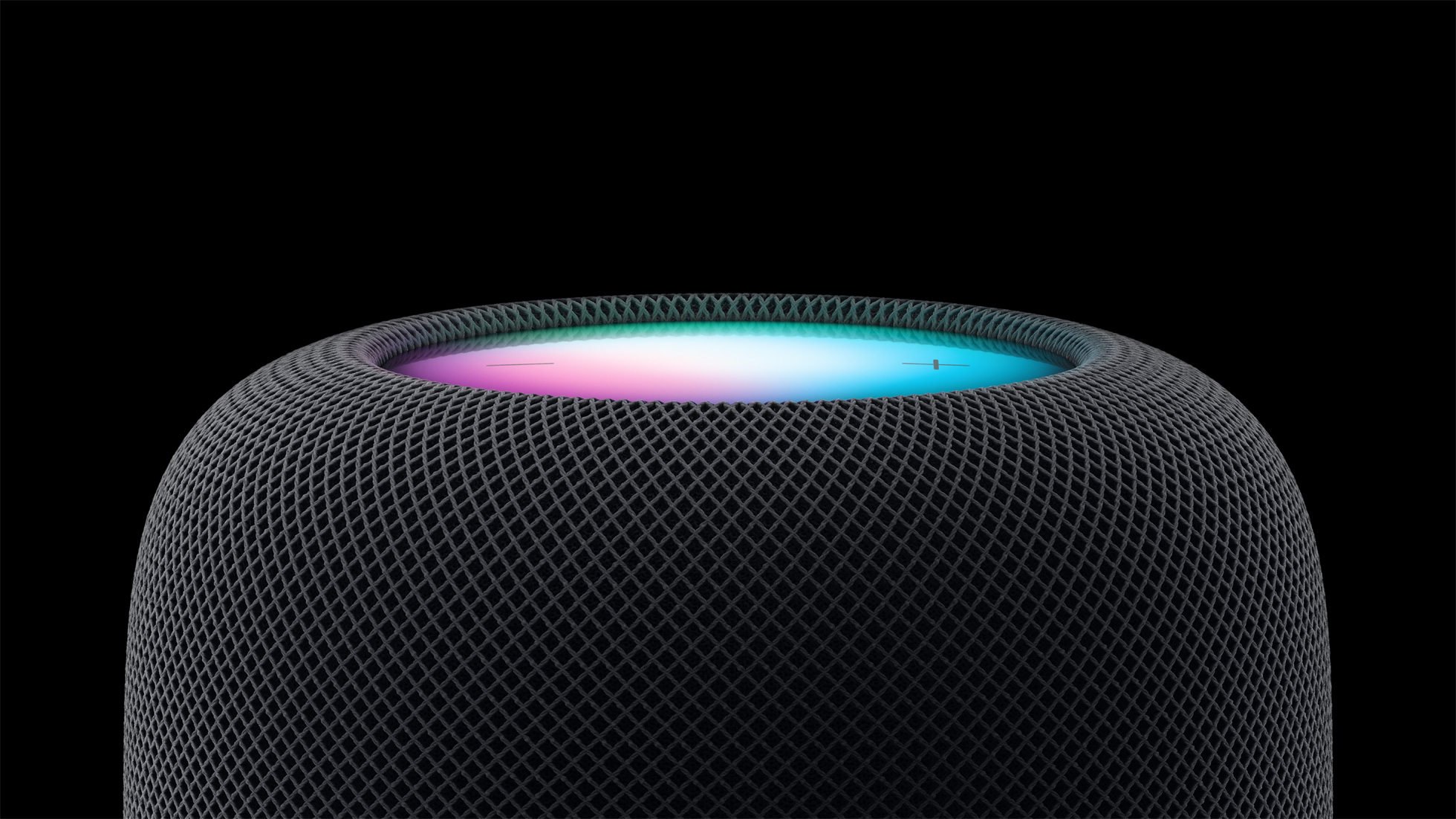
Apple HomePod (2023) review
Welcome to the dark night of the smart speaker. A few years back, the category felt inevitable — and, frankly, why not? We’ve smartened our phones and watches. Why shouldn’t our homes be the next step? For decades, many looked longingly at home automation. Smart blinds that opened with your alarm clock might as well have been magic — or, at the very least, the domain of those with money to burn.
Suddenly, however, a new generation of the technology arrived with the promise of a (relatively) affordable entry point into home control. Smart lights, smart smoke detectors, smart locks, smart doorbells — and at the center, the smart speaker, the consummate hub and portal into this brave new world.
But the best laid plans are still beholden to market forces (among others). The looming recession of the last 12 or so months hasn’t been especially kind to the smart speaker. As is now well documented, a disproportionate number of Amazon’s recent layoffs were targeted at the Echo division, as it stared a $10 billion annual loss in the face.
We don’t have exact numbers for Google’s Nest division, though the company appeared to freeze hiring ahead of its own massive culling. None of that factors in all of the quick reversals (Microsoft Cortana) and aborted starts (Samsung Bixby) from a few years back. The cadence of hardware releases generally appears to have slowed across big corporations, owing to economic headwinds and supply chain shortages.
It’s all a very strange way of setting the scene for a rare Apple reversal. Just shy of two years after officially killing the HomePod, the original premium smart speaker has arisen from the ashes. But why? And why now? The official line from Apple seems to be, simply, because the people asked for it.
As far as that explanation goes, I will say this: The most recent Apple iteration is a company that is, in fact, more responsive to users’ needs and desires. We’ve seen the clearest manifestation of that in the MacBook line, reversing previous foot dragging by improving some features (keyboard, webcam), dropping unwanted ones (Touch Bar) and bringing back old favorites (MagSafe, SD card slot).
Even so, this move is odd on the face of it. In March 2021, the company told the press that it was discontinuing the original HomePod to “[focus] our efforts on HomePod Mini.” It seemed Apple had lost faith in the notion of a premium smart speaker. And it wasn’t alone. The Google Home Max has been MIA for six years, and while the Echo Studio got a software upgrade last year, the device certainly hasn’t been a focus for Amazon. It seemed that, in a world of Nest Minis and Echo Dots, Apple was putting its eggs in the $99 Mini basket.
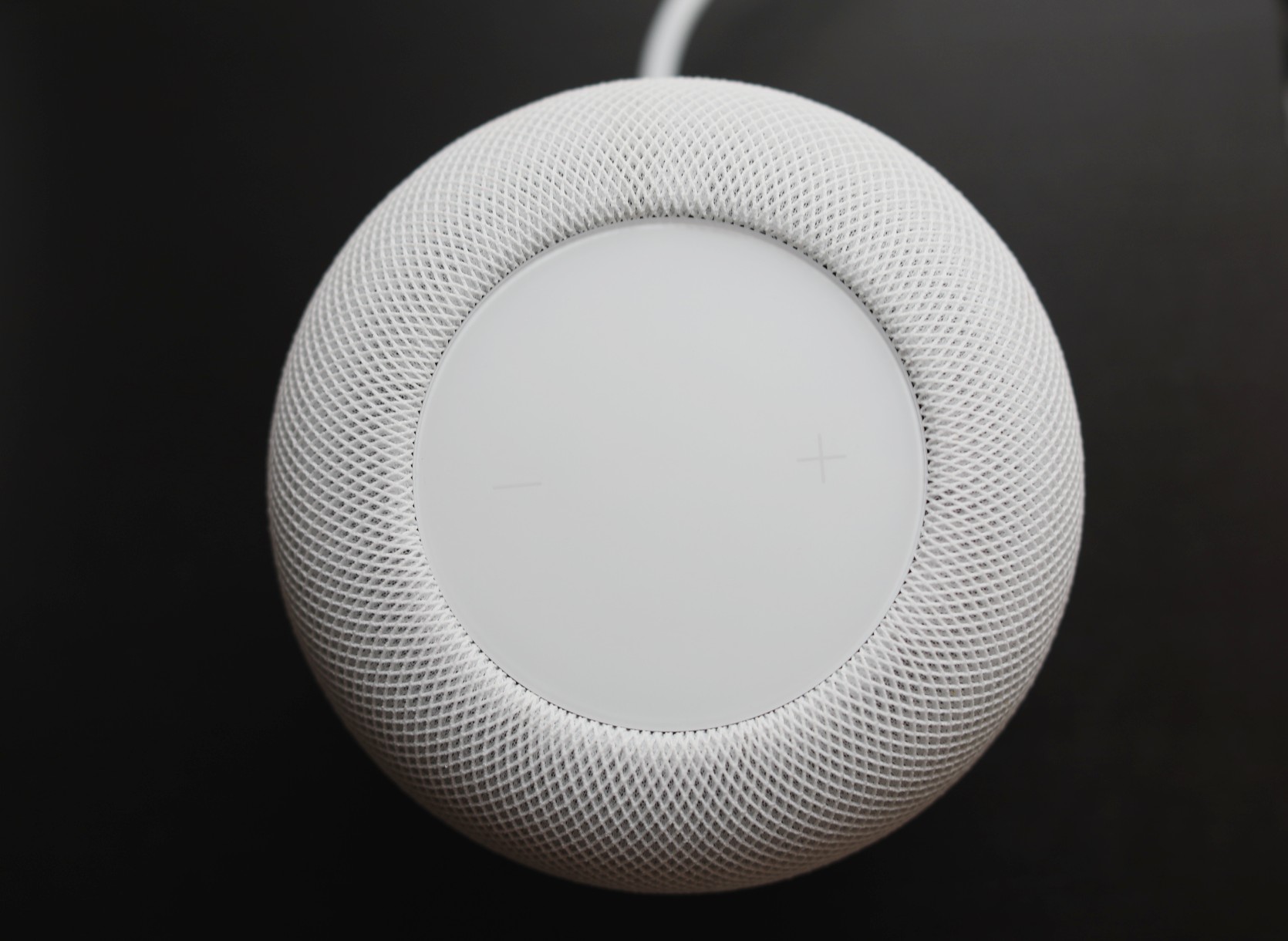
Image Credits: Brian Heater
If the “All-New HomePod,” as Apple is calling it, had arrived in its current form after its predecessor, I doubt anyone would have blinked an eye. Nothing about the product’s presentation screams “radical departure.” In fact, the speaker looks remarkably like the model that debuted in 2018. As it is, you might need to consult a spec sheet to pick out the key differences between the two devices, which are separated by roughly half a decade. The 2023 HomePod is 0.2 inches shorter than its predecessor, with a height of 6.6 inches (the radius is the same, at 5.6 inches).
It’s also lighter, dropping from 5.5 pounds to 5.16. That’s not an insignificant difference, and certainly if we were talking laptops, it would be a big deal. Although the HomePod is designed for one to pick it up and move it around the house, my sneaking suspicion is a great majority of users will clean off a spot on a table top or shelf and rarely — if ever — move it. After all, there’s no battery power on board. If there were, it would be a distinctly different product. As it stands, it needs a constant power source.
In fact, the cable is another key physical difference. The 2018 model had what one might deem a technically detachable cable, but it fell firmly into the standard corporate-speak that recommended users visit a licensed Apple certified repair specialist. That also currently appears to be the standard line with regard to repairability, meaning that, in spite of the recent availability of user repair kits for the iPhone and MacBook, I wouldn’t attempt to crack it open at home if you’re worried about potentially voiding the warranty.
This time, mercifully, the cord is designed to be detached by the user. In fact, it ships unconnected, in its own little box. Once connected, you can pull it off with one, firm yank. The cables maintain the same woven design you’ll find across most of the latest Apple products. Unlike the HomePod Mini, however, it ends in a standard wall plug (three-pronged here in the U.S.), rather than USB-C. My biggest issue here from a cable perspective is that it’s too short. It’s five feet long — a full foot shorter than the Mini cable. I set up two HomePods as a stereo pair, currently flanking my desktop display.
The near one (right) reached just fine. The other required an extension cord. A minor complaint, but an easy potential fix for future products. The good news here is that, while Apple won’t be selling a longer version of the cable, it’s an industry-standard plug, so you’ll be able to buy a longer one to swap in. I suspect that, before long, third parties will be offering their own matching woven fabric versions that come in six-foot lengths.
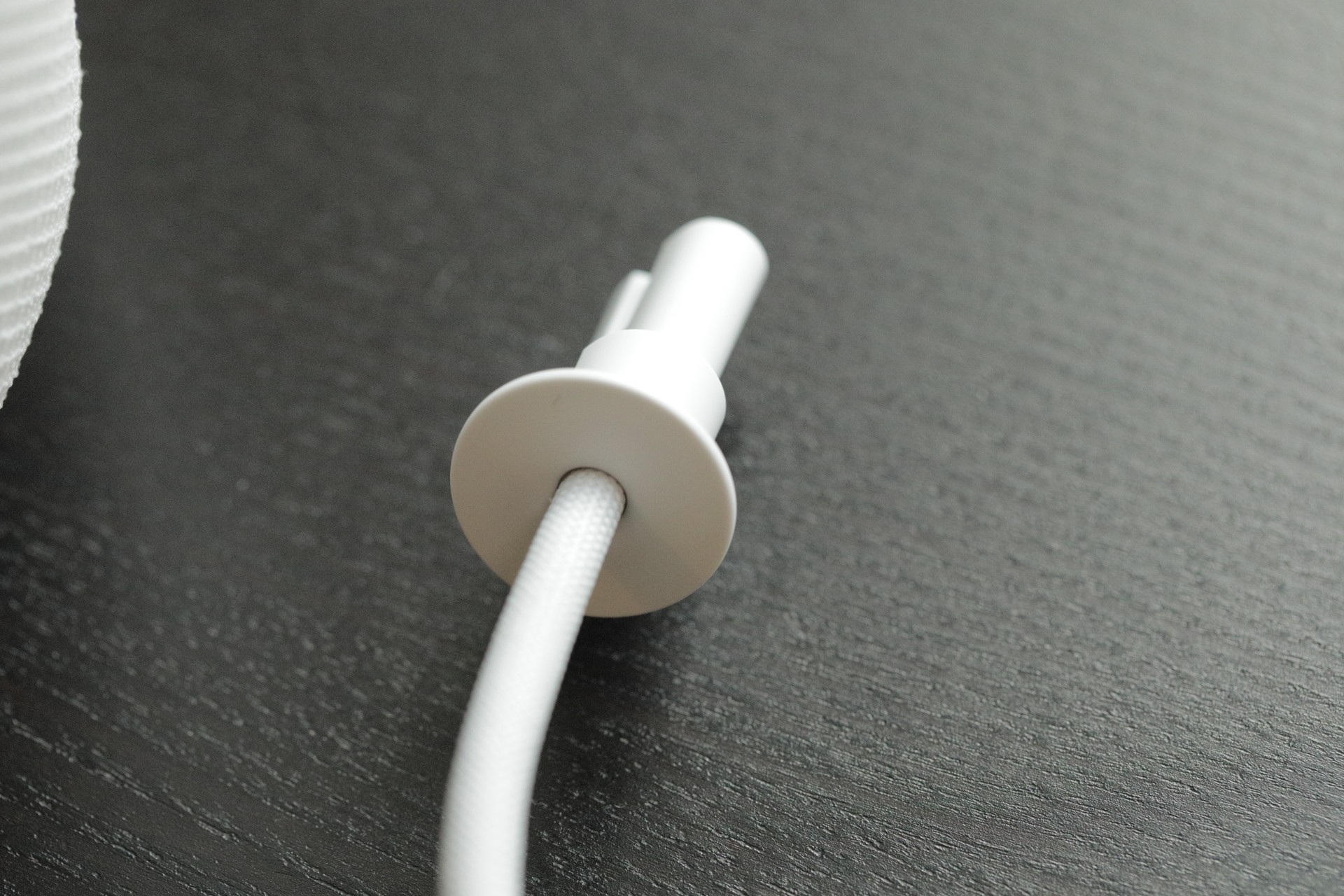
Image Credits: Brian Heater
There are no other ports on the product. I’ve had a Google Home Max sitting on my desk since…well, since Google released the Home Max. It’s a fine workhorse of a smart speaker, with an auxiliary in port. It’s great for hard wiring to a PC or, in my case, a turntable. It’s not necessary, exactly, but it’s a great option to have when you want it.
Beyond these small things, you’d be hard pressed to tell the old and new HomePods apart by looks alone — the white one, at least. Apple swapped the first gen’s grey color for something it calls “midnight.” In this instance, at least, the company can be forgiven for what isn’t an especially clarifying name. It’s probably too wordy to call it “mostly black, but blueish in certain lighting.” It’s a nice color, though of the two, I’m still leaning toward the white. I might have gone with a more straightforward black or dark gray, but, to my eyes at least, it’s mostly black most of the time. The best thing about the new color, however, is that it’s made from entirely recycled fabric.
There isn’t the same variety you’ll find with the Mini. Nor is there anything that pops quite like that line’s orange and yellow options. That’s long been Apple’s M.O. — “fun” vibrant colors for the cheaper models and “serious” muted options for the high-end models. The latter makes sense here, as I’m sure most people are looking for something a bit more staid that fits in with its surroundings in the home. Though, again, more options are rarely a bad thing.
I’ve always liked the HomePod’s design. It’s the best-looking smart speaker. As such, it’s not especially surprising Apple didn’t fix what wasn’t broken, as tempting as it might have been to truly reinvent the thing ground up after five years. The mesh fabric remains, a crisscross diamond shape also found on the Mini that the company says is optimized for sound. Certainly, it’s distinct and, one might even suggest, iconic. It’s rigid but does have a slight give when a little pressure is applied. The white color is very prone to getting dirty. After sitting on my desk for a few days, the bottom has already become slightly discolored from dust. Predictably, Apple offers a cleaning guide for this reason.
The speaker’s cylindrical shape slowly tapers on the top and bottom. Below is a silicone pad that creates a bit of friction, while still allowing for the system to be nudged into position (a change from the 2018 model’s convex foot). There’s an internal suspension system connected to the woofer that allows the speaker to output loud, deep bass sounds without intentionally moving the rest of the speaker in the process. Up top is the familiar touch display — the most striking bit of the HomePod design language.
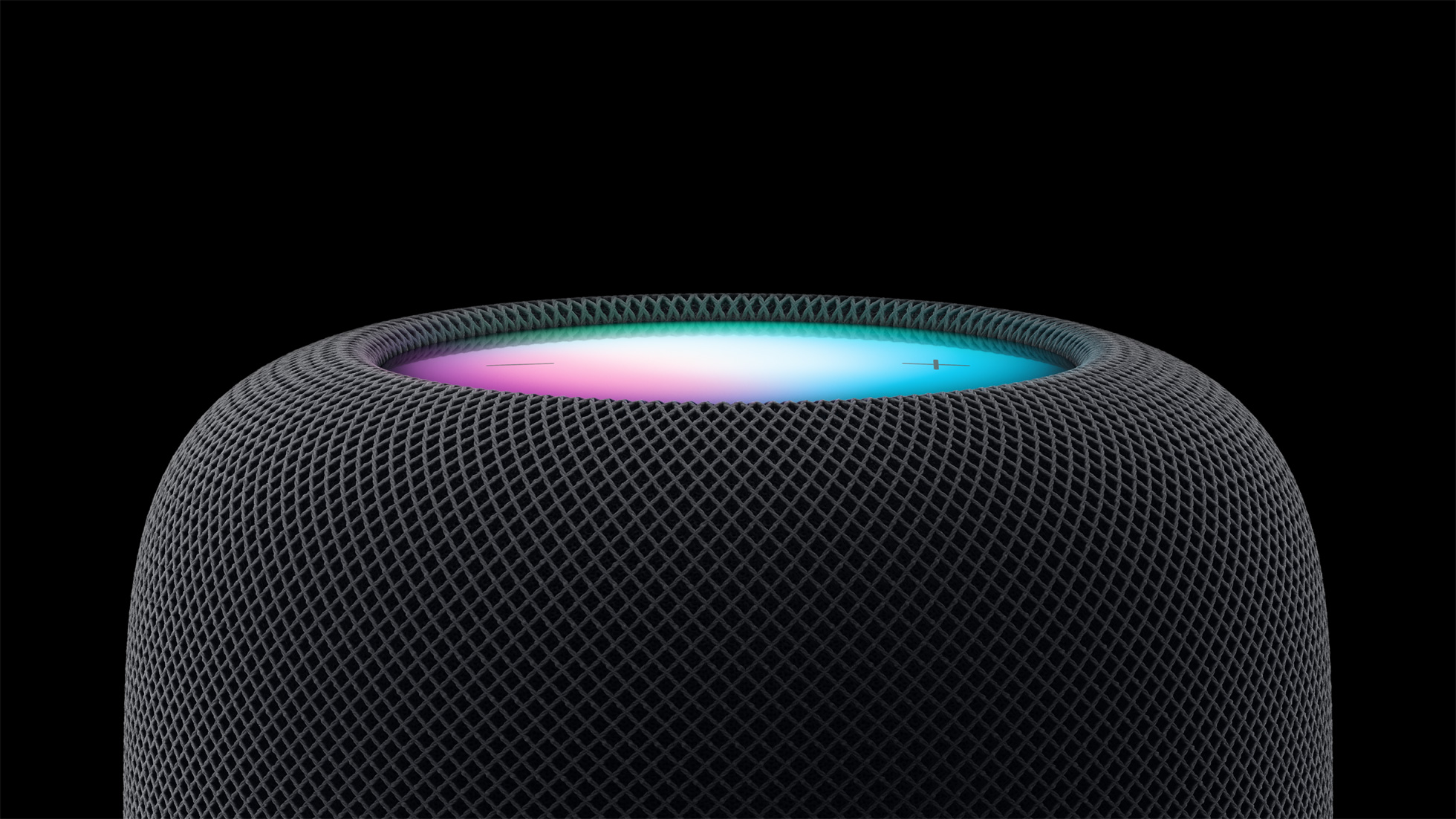
Image Credits: Apple
The illuminated touch surface up top has been expanded by 6x. That means the shiny touch display and its underlying lighting system effectively reach edge to edge. The glow for playback and the cloud of colors for Siri have always been a clever touch that’s nice to look at. Apple clearly wants Siri to serve as the primary interface here. It’s a smart speaker at the center of a smart home, so all of that logically tracks. There is limited touch control as well. A single tap will play or pause the music and a pair of fixed buttons turn the volume up and down.
There’s little doubt in my mind that, when Apple began discussing bringing HomePod back, they explored a lot of ideas, including fundamental changes to the system. I suspect during those conversations, the notion of a more full-fledged touchscreen was raised a few times, at least. After all, in spite of their stubborn refusal to bring one to the Mac, Apple (and its suppliers) has gotten quite good at touchscreens. Again, this is another one of those decisions that would have fundamentally altered the product. Suddenly your smart speaker is a smart screen — albeit one that is still a lot more speaker than screen.
I still really like the Nest Hub. It’s a great little piece of hardware, whose usage has evolved for me over the years. It makes sense as a control panel for smart home functionality and a visualizer for alarm features and voice functionality like weather and sports scores. These days, I probably use it most as a companion piece for Spotify. It’s a small thing, but I really like having the album art and song information on a screen that also lets me skip and repeat tracks. It’s easy to see how similar functionality would be nice on a HomePod, though its design choices (a 360 speaker that covers most of its surface area, but for a small display on top) severely limit such things.
I certainly won’t go so far as to see that Apple has created some platonic ideal speaker design, but I wholly understand why the team tasked with bringing HomePod back found it difficult — and in many respects unnecessary — to reinvent the wheel. From a pure marketing strategy standpoint, however, killing the HomePod, only to bring it back in a nearly identical form factor nearly three years later, is baffling. But we’re not here to dwell on marketing decisions.
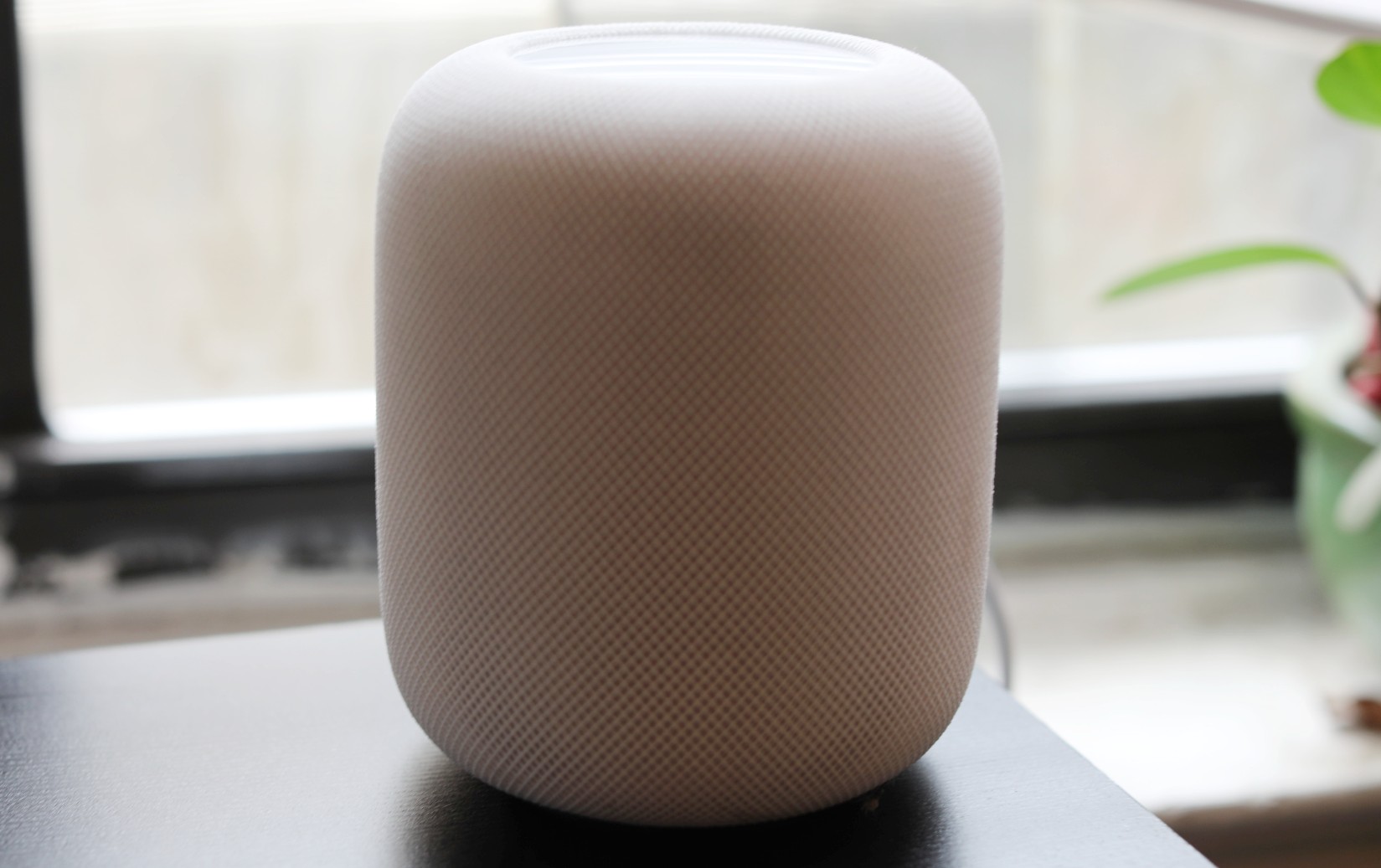
Image Credits: Brian Heater
One nice thing about fast-forwarding three years is the HomePod has picked up some tricks from its fellow Apple products along the way. Those start with setup. The processor has been updated from the A8 (which debuted on the iPhone 6 in 2014) to the S7 (which powers the Apple Watch Series 7). Mind, Apple has since released the S8, but that chip has the same processing power as its predecessor, with the primary distinction being the accelerometer and gyroscope that enable crash detection — something that isn’t especially relevant to a smart speaker.
One unfortunate product of the S7’s inclusion is that the HomePod has Wi-Fi 4 on board. The latest hardware products support Wi-Fi 6e. The iPhone 14 supports Wi-Fi 6. Wi-Fi 7 is set to debut in 2024. WiFi 4 debuted the year Barack Obama was elected to his first term. The 2018 HomePod 1 supported Wi-Fi 5, which debuted four years prior.
If you’ve got an iOS, pairing is simple. In fact, it’s a lot like pairing an Apple Watch. Hold the device close to your new speaker, wait for confirmation and then hold the phone up so it captures the light pattern on top of the device inside a circle on your display. Pick up a second HomePod and the process of making a stereo will bring the entire setup process to around two minutes or so. Note, however, that you need an iPhone for setup, even if you expect to rely entirely on AirPlay. That’s a bit of a disappointment, but not entirely unexpected, given Apple’s general approach to hardware interoperability.
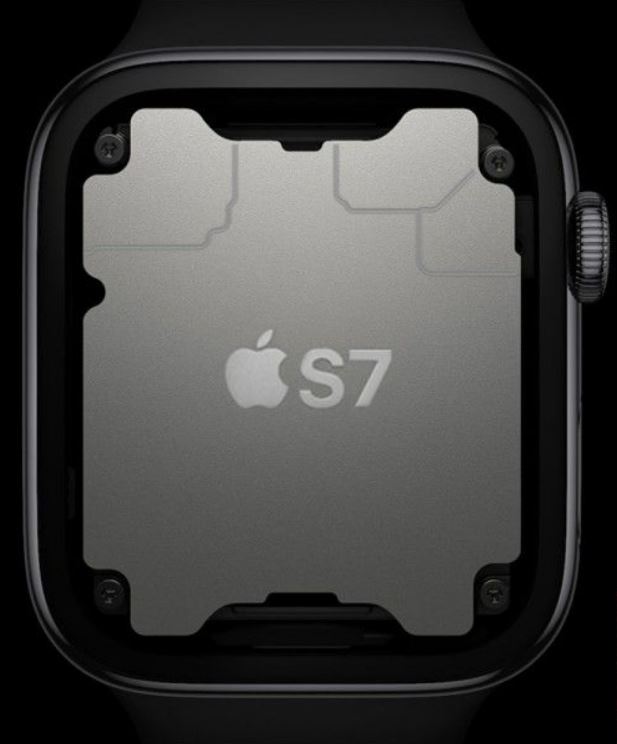
Image Credits: Apple
A note on pairing: HomePods can only be paired with their same model. It seems perfectly reasonable that you can’t make a stereo pair between, say a HomePod and HomePod mini. Listen, I get it. The hardware, tuning and size of the two devices are so dramatically different, a balanced sound is a near impossibility. The inability to pair HomePod 1 and HomePod 2, on the other hand, remains something of a mystery as I write this (more later), but Apple’s statement on the matter boils down to the idea of “giving a user the best possible experience.” Here we are, once again, at the tricky crossroads of “best experience” and user control.
I would argue that the inability to pair the two product is — in itself — a less than best experience. Apple ran out of HomePod 1 stock. That means that if you have a single first-gen device and want a stereo pair, you’ll have to buy another first-gen, definitely not through Apple and likely refurbished. It’s not the end of the world, by any means, but it does put the customer in something of an awkward position.
One nice feature borrowed from the Mini is handoff. This utilizes the S7 chip and ultra-wide band (UWB). You’ll need to hop into settings to enable the feature, but it’s worth it. Start a song with Apple Music on your iPhone, hold it near the HomePod and it will start playing there, accompanied by a satisfying haptic fist bump. Move the phone near the speaker again and you can transfer it back. I really like this feature. It’s a good example of how nicely hardware can play together if you make your own devices, software and chips. It’s also surprisingly receptive. In fact, I found myself having to disable it while the HomePods are on my desk, otherwise it will accidentally trigger when I’m using the iPhone two feet from the speakers.
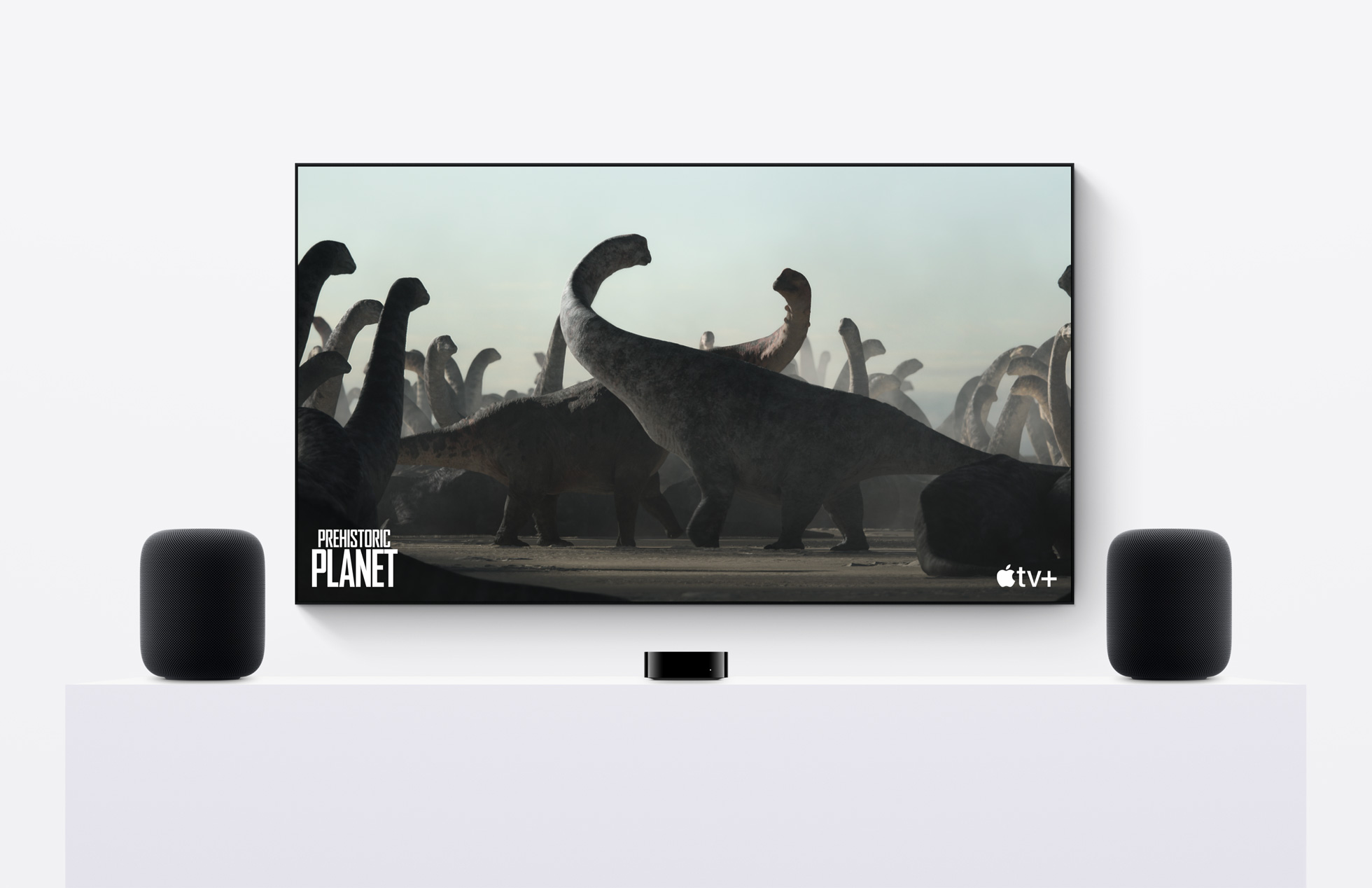
Image Credits: Apple
I’m a longtime Spotify subscriber who moved over to Apple Music for the purposes of this review (shout out to SongShift’s playlist transfer feature). You can use it through your Airplay-enabled device (also a good way of using a stereo pair as an entertainment system without Apple TV), but the experience just isn’t as good as it is with Apple’s software (though the company says the sound quality should be unaffected). Apple builds ecosystems. It’s worked this way for decades, and these days, any hardware maker with the necessary resources has more or less followed suit. As someone who writes about tech for a living, I think it’s important not to rely on a single company — though I understand why people do. It’s often a smoother experience. The biggest thing I miss about Spotify thus far (aside from being far more used to the UI) is the way it syncs song playback in real time across devices.
It’s a great feature and losing it is a bit annoying, as I’m not great at keeping track of what was playing where. Among other things, it’s great to be able to view what’s now playing on your computer and phone screen. There were also instances where I would wait too long after playing a song on my computer, tap the top of the HomePod to pick up where I left off and have Siri instead choose something from a playlist of songs it thinks I’d like.
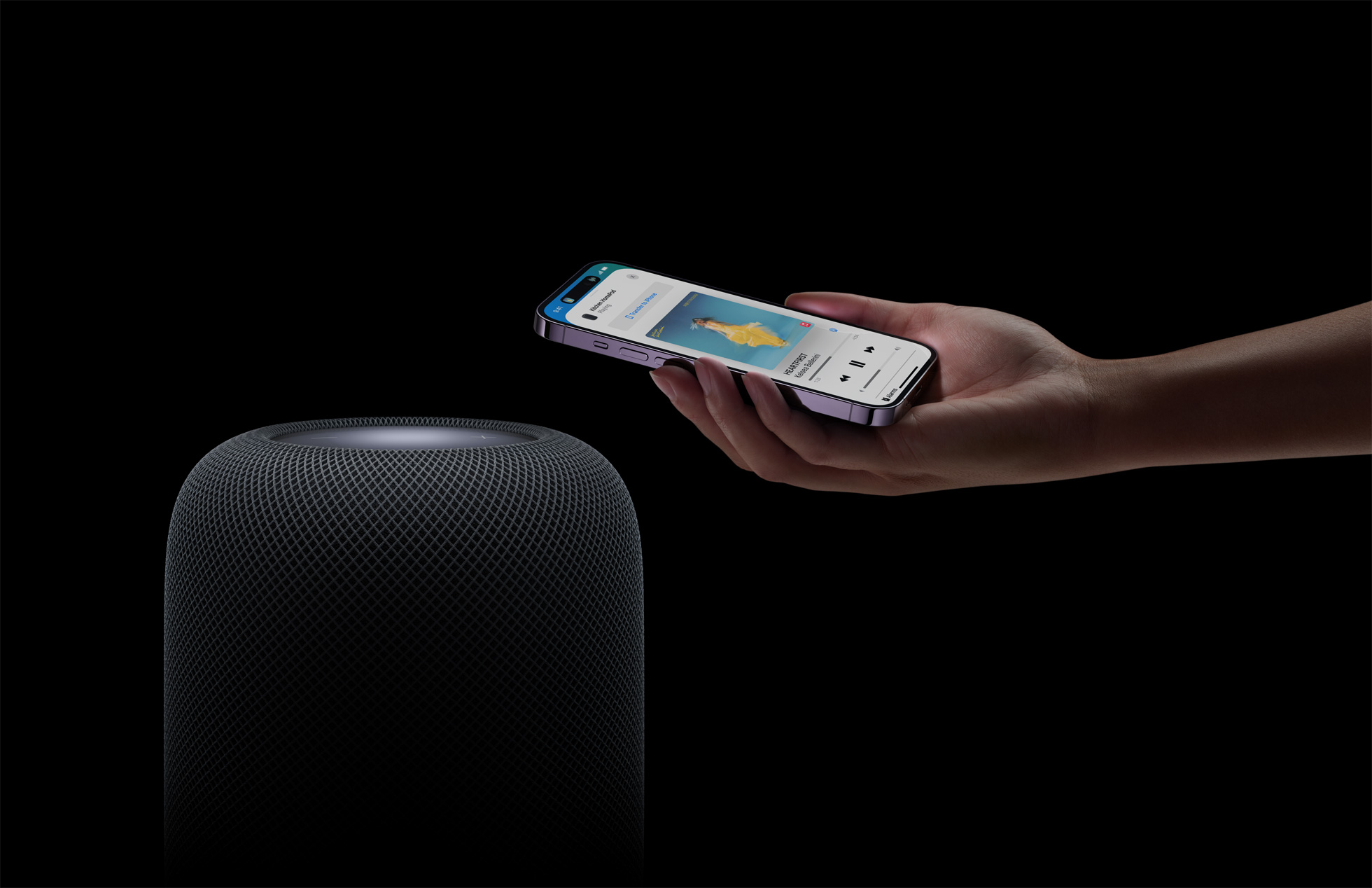
Image Credits: Apple
Point in favor of Apple Music after a few days back on the platform: Lossless audio, spatial audio (still a bit on the fence about its usefulness here — more below) and a few of the folks who jumped ship from the competition as fallout from the whole Joe Rogan/vaccine misinformation situation — Joni Mitchell and Neil Young in particular. Also, Apple Music pays artists a lot more (relatively speaking) per stream than Spotify (though still not enough, in my humble opinion).
While the exterior of the product remains largely unchanged, the internals have received a significant overhaul, beyond the inclusion of a new chip. I asked Apple for a rough percentage of how much the insides have changed, but didn’t get a straight figure, beyond that the changes were “significant.” The woofer and tweeter arrays have both been updated. Interestingly the tweeter figures have dropped from seven to five.
It’s worth remembering that music has always been a major driver for Apple. It was something Steve Jobs was famously passionate about, and it’s something that has remained an essential part of the company’s DNA. The original HomePod was, arguably, the first smart speaker to prioritize the speaker over the smart. That’s likely partially due to the fact that Siri wasn’t built with the smart home first, like Google Assistant or Amazon Alexa. Even more pertinent, however, is that Apple is all about a premium experience, and that continues to set HomePod apart from most.
Give me a sec, I’m gonna quote Apple directly here:
HomePod delivers incredible audio quality, with rich, deep bass and stunning high frequencies. A custom-engineered high-excursion woofer, powerful motor that drives the diaphragm a remarkable 20mm, built-in bass-EQ mic, and beamforming array of five tweeters around the base all work together to achieve a powerful acoustic experience. The S7 chip is combined with software and system-sensing technology to offer even more advanced computational audio that maximizes the full potential of its acoustic system for a groundbreaking listening experience.
“Groundbreaking” is, perhaps, a bit hyperbolic. But yeah, in spite of its relatively compact size, the new HomePod sounds great. It’s big, bold and dynamic. It fills a room easily and without distortion. It gets loud — like real loud. Like, I didn’t push it to the limit because I live in a New York City apartment surrounded by neighbors who (thankfully) don’t test speakers for a living. Really, in my current living situation, two HomePods is probably overkill, but I can’t argue with the value add of a stereo pair.
If you made me choose a single word to describe the sound here, I would probably go with “full.” The highs are high, the lows are low, the mids are… you get the picture. This is, of course, best experienced with songs available in high bit-rates or a lossless format. This, of course, is one of the places where Apple Music shines relative to Spotify. I’ve long believed that years of listening to compressed music has made it difficult for the average listener to pick out the difference between, say, lossless and a high-bit rate. But paired with the new HomePod, digital streaming starts to sing.
The separation is great, especially with a stereo pair, which lends a sense of space to the music. Drums, in particular, sound clean and clear, though the low end can overwhelm, and, if you’re like me and placed your speakers on the desktop in front of you, you can really feel elements like the kick drum. That’s sometimes nice and sometimes too much. Apple’s position favors its own in-house tuning. It’s a delicate balance, but I tend to favor more control and would love the ability to fiddle around with EQ sliders in the home app.
For an out of the box experience, however, it’s hard (if not impossible) to beat HomePod. You’re up and running within seconds, and the sound is rich and full. I’ve picked up details I’ve missed in familiar songs and, listening to things like podcasts, even noted some things (like mic movement), which probably weren’t intended to be heard. The company notes that while the focus of the press material has (understandably) primarily been about music, that it’s also tuned things for the human voice.
In fact, an upgrade that recently dropped via iOS 16.3 will improve the quality of voice on the system. The feature has also rolled out to the first gen HomePod, which bodes well for Apple’s continued support for the product five years after its initial release. Other features will be arriving down the road via new software, including the ability to hear and alert you when a smoke or fire alarm goes off (unfortunately, unlike Amazon’s offering, broken glass detection will not be available at launch), which is coming in the spring, and “remastering” of ambient sounds like waves and other white noise. The latter will also be available for home routines, so you can have it automatically trigger before bed.
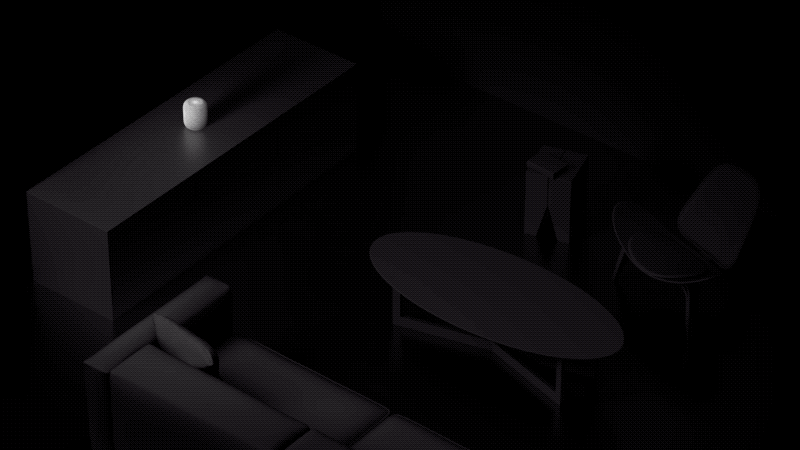
Image Credits: Apple
I’m still not wholly sold on Spatial Audio being much more than a fun gimmick. I understand how it will eventually be important for augmented reality (that Apple headset is due any day now, right?), but I’ve yet to be sold on its broader import. Until now, I’ve largely thought of it as being tied to headphone head tracking, providing the user with a sense of fixed orientation for different sound elements.
With the HomePod, Apple extends the concept to apply to fixed speakers. It effectively builds on stereo sound, offering more precise location and a feeling of space. The number of albums that have been mastered — or remastered — for the feature is lacking at the moment, but Apple Music curates them all into one handy spot. Contemporary pop is well represented — unsurprising, as that seems to be an ongoing focus for the company. There are some older albums in there, too. I’ve been listening to Lil Wayne, Michael Jackson and McCoy Tyner. I’d say overall, it sounds like a slightly elevated stereo separation.
“Room sensing technology” is a concept that’s probably familiar if you’ve set up any of the higher-end smart speakers, but here’s a refresher, again, from Apple:
With room sensing technology, HomePod recognizes sound reflections from nearby surfaces to determine if it is against a wall or freestanding, and then adapts sound in real time. Precise directional control of its beamforming array of five tweeters separates and beams direct and ambient audio, immersing listeners in crystal-clear vocals and rich instrumentation.
The system has a built-in accelerometer that detects when it’s being moved. The next time you play music, it will effectively use on-board mics to detect whether that sound is being reflected back and then extrapolate its position relative to a wall. This uses the four-mic far-field array designed for trigger Siri (which it does quite well, even when the music is bumping). From there, it will adjust the tuning accordingly, determining whether to incorporate those reflections into the sound. The 360-degree design means that you can also place it free-standing in the middle of a room and get good sound on all sides.
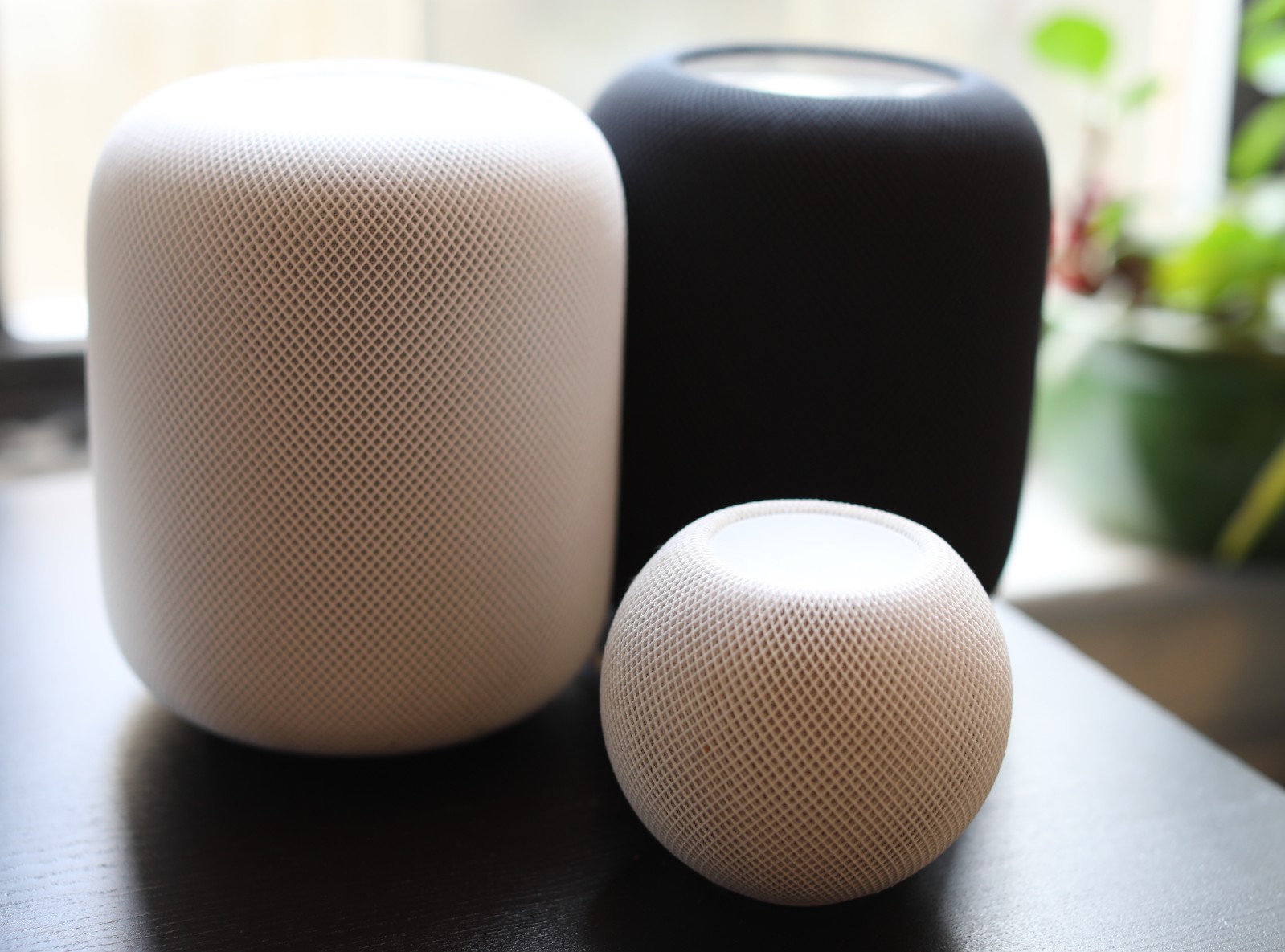
Image Credits: Brian Heater
At $299,the HomePod 2 $50 cheaper than the first generation’s starting price (though it, too, had dropped to $299 before it went gently into that good night). That’s certainly not cheap. At $600, a stereo pair is very much an investment and one that makes the most sense if your situation ticks off the following boxes:
- You have an iPhone
- You subscribe to Apple Music
- You want to set up a system in a few minutes and don’t want to think about it much beyond that
- You’re building a smart home
Remember that spiel about the long, dark night a few thousand words back? I firmly stand by it. It’s a weird moment for the smart home and a strange time to be launching (or relaunching) a smart speaker. On the other hand, maybe it’s a great time. After all, neither Google nor Amazon seem to have a clear strategy at the moment — unfortunately, given that late-last-year’s arrival of Matter is set to bust things wide open, particularly when coupled with Thread (which, for the record, was available on HomePod 1).
I’m not going to dive too deep into Matter. The long and short of it is it’s a protocol jointly developed by some of the industry’s biggest names, including Apple, Amazon, Google and Samsung. It effectively serves as a universal standard, meaning that companies that make smart home accessories don’t have to choose between HomeKit and the rest. You can develop for everything, everywhere, all at once.
I did a bit of a deep dive into the topic at CES, centered around an interview with Jon Harros, the CSA’s (Matter’s governing organization) director of Certification and Testing Programs. He told me, “The IoT started reaching a point where it became obvious to have that reality of the billions of sensors and connected devices that we all know is possible. They all have a major slice of the pie. They’re all doing very well, but the size of the pie could grow orders of magnitude. You’re now not talking about shipping millions of products, you’re talking about shipping billions.”
It’s a nice bit of harmony from vicious competitors, and it’s a boon to the end user. Many existing accessories are backward compatible and will be receiving over the air updates in the coming year or so (waiting with bated breath here for my favorite smart home accessory, the Nest Protect smoke detector). Meanwhile, plenty of new products that support the standard are already shipping.
Home, the same app that lets you control HomePod, is also the central control center for connected devices. To add one, open the app, scan the product’s QR code and wait for the system to connect the two. Once everything is loaded in Home, you can start building scenes and routines, tied to things like your morning alarm or coming home from work. The HomePod also now features built-in temperature and humidity sensors (another trick borrowed from the Mini), which can be used to, say, trigger your smart air conditioner if it gets too hot or cold (I also like being able to ask Siri how warm it is in my apartment versus the outside).
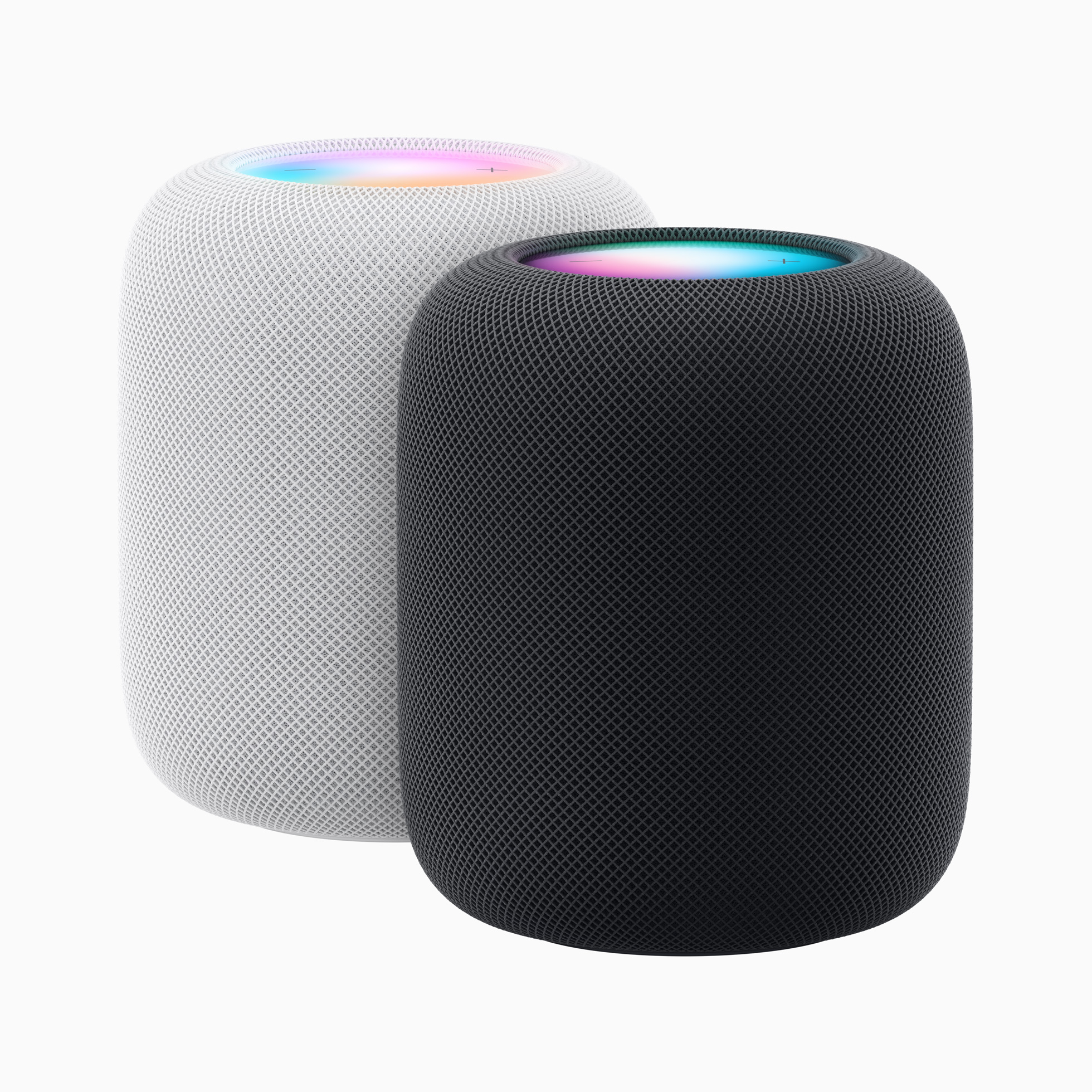
Image Credits: Apple
Strategically speaking, this feels like the perfect time for the HomePod to strike back. Amazon and Google’s defenses are down, and focusing on Matter support specifically and the smart home broadly should help Apple gain some traction. Apple is always focused on that “just works” experience, and the new standards bring the connected home a heck of a lot closer to that goal. The long-rumored HomeOS continues to be long rumored, even as the company continues to drop hints as to its existence. If/when it does finally materialize, it’s a pretty safe bet the HomePod experience will be foundational.
Ditching the original HomePod to the focus on the Mini was — and remains — a weird move. It’s nice to see the big speaker back and better than before — if not radically changed in the way it might have been had the company continued to issue regular updates. A permanent price drop to $299 is certainly nice, though the system still feels a bit aspirational compared to the competition — and doubly so for a stereo pair.
I have quibbles: Apple Music has its shortcomings, Wi-Fi 4 is ancient and the lack of backward stereo compatibility with the first-gen sticks out like a sore thumb. But the HomePod 2 works well, looks nice and sounds great. It’s going to fit perfectly for a select cross-section of consumers. It continues to not be for everyone, and there’s a part of me that strongly suspects that Apple wouldn’t have it any other way.

